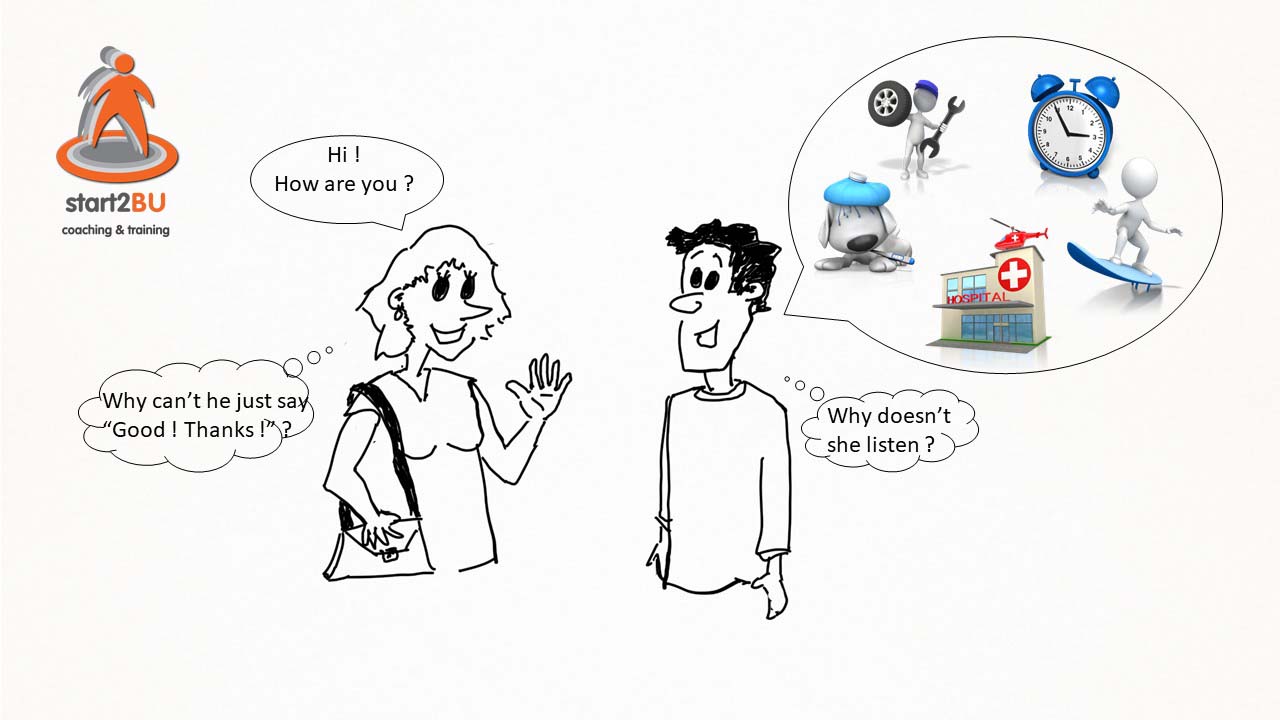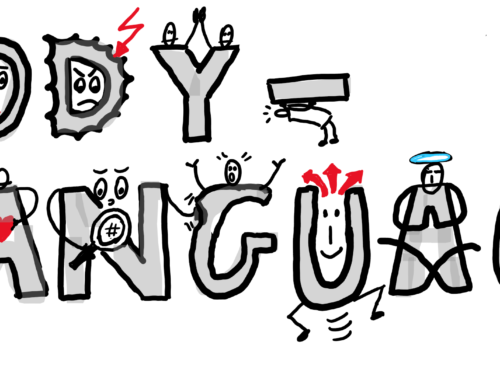The impact of a simple ‘hello, how are you?’ in cross-cultural communication
Cultural differences are not always experienced at a fair distance from home. They can be observed as soon as we drive through the next village, city or county. Over long periods of time societies have developed their own norms and values and these are reflected in the daily interaction in a community, in communication and in ways of thinking.
“How can we communicate effectively and how can I ensure the other person understands me and cooperates with me?”
This question in itself is a big challenge for two people belonging to the same culture, let alone in a multicultural environment.
Why angry Thai keep on smiling
When explaining a communications model in a course with a multicultural audience, I start by talking about the ritual “Hello, how are you?”. Immediately this evokes cultural differences on how to interpret this simple question.
In Western cultures and especially in Anglo-Saxon cultures it is considered more or less a courtesy question.
What we love to hear as a reply is “good, thank you” and then we can proceed with the conversation. If the person deviates from the expected standard answer it better be for a good reason such as something really important or even dramatic which makes the deviation considered acceptable.
During one of my multicultural communication workshops, a Serbian participant replied totally confused:
“Really? Don’t people want to hear how I’m really doing?”
“No, unfortunately not necessarily. It will depend on the culture of your conversation partner.”
“But I have been living in Brussels for a year now and every day I’ve been giving my colleagues a detailed account of how I am. Nobody ever told me anything about it.”
The surprise and indignation was strongly felt by everyone in the room and all participants gave their vision from their own culture.
I travelled a few years regularly to Central and Eastern Europe and I know from experience that this question is considered a serious one. The reply can be very detailed including the bumping of a toe against the door in the morning and the annoying motorist in traffic.
But imagine the reaction from the point of view from another culture:
“Why even bother asking a question you don’t want to hear the answer to?”
Indeed. You have a valid point there. And that is what we call the influence of culture or the cultural behaviours as they have developed and keep developing within a community.
Anyone who has already travelled to Asia certainly knows that a smile does not necessarily mean that people are happy. Thai for example can be very angry and yet they keep on smiling. It is simply the norm within their culture.
In certain cultures you may get a door smashed into your face because it is simply not customary to hold the door for the next person behind you. And this is a cultural behaviour norm and a way of communication. There are so many examples.
How do cultural differences express themselves at work?
- Are we straightforward, direct in our communication to the edge of bluntness?
- Or do we beat around the bush to make something clear?
- Do we talk in enigmas requiring the listener to do some code cracking to understand what we really mean? Does the listener need to read between the lines?
In Western cultures we are very strongly focused on verbal communication. We may even get restless when all of a sudden there is silence in the conversation. Eye contact confirms our interest in what the other person is saying. (1)
In other cultures, the absence of eye contact does not necessarily mean people are not interested in what we say. They may be thinking really hard to understand the context behind our words.
Explicit versus implicit communication
This is sometimes referred to as low-context versus high-context communication. (2)
A culture we know to be very explicit in their communication are Americans. They are direct and clear and therefore considered ‘low context’. (2) The low context means that you do not need to know the underlying context to understand what is being said.
Specialists in cross-cultural communication, Fons Trompenaars and Erin Meyer refer to the ‘early days’ of the so-called new Americans who could not afford to lose time with indirect communication. It was in their mutual interest to keep cultural barriers as low as possible in order to survive in a new country. And this is how cultural norms and values develop.
A country at the other end of the spectrum is Japan. Their very old history and traditions have an impact on Japanese communication. Here we are talking about high-context communication. Japanese read ‘the air’ as Erin Meyer describes it. They are looking for a context behind what is being said. (2)
We would call this reading between the lines. And this is where communication can go wrong.
Here’s an example of implicit communication:
Imagine: I’m going to visit friends and I haven’t eaten. As a matter of fact I feel really hungry. My friends enquire if I’ve had something to eat and I say no. Shall they prepare something for me, they ask. And I say ‘Oh, please, you really don’t have to make any effort’. After some pressure I give in and I am glad to get something to eat. This is how I learned to respond from home and from my own culture.
This is implicit communication. My friends suspected I had not eaten yet. I was hungry but I didn’t accept the invitation immediately, out of politeness. It is a form of ritual communication we both understand being from the same culture.
Between the Americans at the explicit end of the spectrum (low context) and the Japanese at the implicit end (high context), we can find rather close to the Americans, Canadians, followed by Dutch, Germans, Scandinavians and towards the middle Poland. (2)
Just beyond the middle – more towards implicit communication or high-context – we may find the Belgians, followed by Spaniards, Italians, French, Russians, India, countries from the Middle East and the Asian cultures leaning closer to Japan. (2)
Flemish people from the north of Belgium, will certainly understand how Dutch people from the Netherlands are more explicit and direct in their communication even though they speak the same language.
How can this cause communication problems and how to solve it?
Communication can easily go wrong if messages are given implicitly. The communication then relies on the ability of the other party to be able to interpret the context although we do not explicitly provide the context.
When we communicate monoculturally, we usually understand the other person well. If we communicate across cultures, we have more difficulties understanding the other person well because we will interpret things differently. (2)
Meyer states that most problems in cross-cultural communication arise between cultures that communicate implicitly. These cultures each have a different way of interpreting communication from their own high context. They are in danger of giving a false meaning or interpretation to a communication from another culture.
How can we improve cross-cultural communication?
The solution is simple. You can prevent many problems by simply making clear agreements in advance. If you work with multiple cultures, it is good to name everything as much as possible and not to give interpretations without checking meaning. In this case it means: what you hear is what it means, nothing more and nothing less.
Or, what a successful manager at retirement age answered when I asked him what helped him to build his career:
“Direct communication has saved me a lot of time.”
Would you like to know more about cross-cultural communication?
Yes, I would like to receive newsletters like these in English or in Dutch!
Would you like to participate in a communications workshop?
(1) Fons Trompenaars & Charles Hampden-Turner, “Riding the waves of culture”
(2) Erin Meyer, “The culture map”







